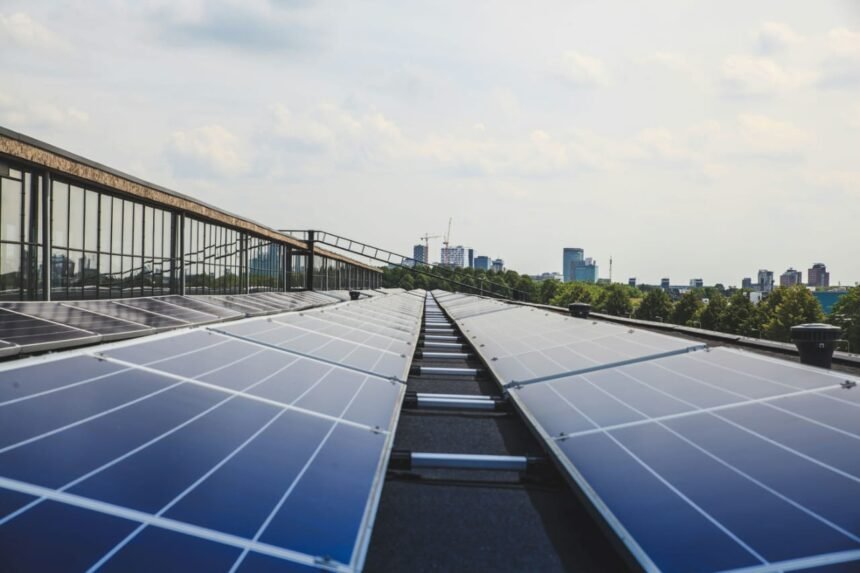Thinking about solar power for your home? It’s not just about reducing bills. The real impact is far more profound—and much more urgent.
Your home’s carbon footprint is a major contributor to climate change, even if you don’t see it. But with every rooftop fitted with solar panels, households can shrink that footprint and help shift the balance toward a cleaner, more sustainable planet.
Let’s explore how homes contribute to carbon emissions—and why solar panels are a key part of the solution.
What Is a Home’s Carbon Footprint?
A carbon footprint is the total amount of greenhouse gases (mainly carbon dioxide) emitted directly or indirectly by an individual, household, or activity.
For the average home, the major contributors include:
- Heating and cooling systems powered by fossil fuels
- Electricity use from non-renewable sources
- Cooking and appliances
- Hot water usage
- Lighting and entertainment
- Transportation-related emissions (indirect but connected)
While your lifestyle choices matter, energy consumption is the largest component of most households’ carbon footprint. And the source of that energy makes all the difference.
How Electricity Generation Affects the Environment
In the UK, although the energy grid is becoming cleaner, fossil fuels like gas still supply a significant portion of residential electricity. This means each time you switch on a light, boil a kettle, or charge your devices, carbon emissions are being generated somewhere.
These emissions contribute to:
- Climate change
- Air pollution
- Ocean acidification
- Loss of biodiversity
The good news? This part of your carbon footprint is within your control—and that’s where solar panels come in.
How Solar Panels Help Reduce Your Carbon Footprint
Installing solar panels allows your home to generate electricity without burning fossil fuels. Over time, this can dramatically reduce the volume of carbon emitted into the atmosphere due to your energy use.
Here’s how the benefits stack up:
1. Zero-Emission Energy Production
Solar panels convert sunlight into electricity without combustion. That means no carbon dioxide, no methane, and no nitrous oxide—just clean, usable energy.
2. Reduction in Grid Demand
By producing your own electricity, you draw less from the national grid. This lowers the overall demand for power generated from non-renewable sources.
3. Carbon Payback in Just a Few Years
While solar panels require energy to manufacture, the average system “pays back” its carbon footprint within 1 to 4 years. After that, it’s a net carbon reducer for the rest of its 25+ year lifespan.
How Much Carbon Can Solar Panels Really Offset?
Estimates vary depending on your location, energy use, and panel size, but a typical UK home with a modest solar array can save approximately:
- 1 to 1.5 tonnes of CO₂ per year
- That’s equivalent to:
- Driving 5,000+ miles in a petrol car
- Charging over 100,000 smartphones
- Burning 500 kg of coal
Over two decades, the savings add up to more than 30 tonnes of avoided emissions—all from a system that silently sits on your roof.
Solar Power for Your Home: A Closer Look
Making the switch to solar power isn’t just a feel-good move—it’s a practical, measurable way to take control of your environmental impact.
Benefits include:
- Energy independence: You rely less on the grid and gain more control over your energy mix.
- Long-term carbon savings: Unlike offset schemes or temporary fixes, solar panels reduce emissions continuously.
- Support for national sustainability goals: Widespread residential adoption contributes to larger carbon reduction targets.
Beyond Electricity: Solar’s Indirect Carbon Benefits
Solar energy’s environmental impact doesn’t stop at clean electricity. It has ripple effects across wider systems and habits.
1. Incentivises Efficient Energy Use
Households with solar panels often become more aware of how and when they use energy. This mindset shift often leads to lower overall consumption.
2. Reduces the Need for Grid Expansion
Decentralised energy generation means less need for large-scale infrastructure, reducing construction-related emissions.
3. Improves Local Air Quality
Less reliance on fossil-fuelled power stations means cleaner air in towns and cities—an indirect but essential environmental win.
Why Rooftop Systems Matter
Rooftop solar panels make use of existing space, meaning there’s no land disruption or habitat loss. In contrast, fossil fuel production often requires land clearance, water extraction, and chemical use—all of which carry significant ecological costs.
Solar vs Other Carbon Reduction Strategies
Let’s compare solar panels to other common ways of reducing household emissions:
| Action | Estimated CO₂ Savings Per Year | Long-Term Impact |
| Switching to LED bulbs | ~0.15 tonnes | Moderate |
| Driving an electric vehicle | ~1.5–2 tonnes | High |
| Using energy-efficient appliances | ~0.3–0.5 tonnes | Moderate |
| Installing solar panels | 1–1.5 tonnes | High and compounding |
Solar energy stands out not only for its savings but also for its consistency—day after day, year after year.
Challenges to Consider
No solution is perfect. Solar panels, like any manufactured product, have an environmental footprint tied to:
- Mining raw materials (e.g., silicon, aluminium)
- Manufacturing emissions
- Transportation and installation
- End-of-life recycling
However, when assessed across a full lifecycle, the carbon savings far outweigh the initial impact. Recycling initiatives are also improving, reducing waste concerns.
Looking Ahead: A Low-Carbon Lifestyle Starts at Home
Climate change can feel overwhelming, but home energy choices offer a rare opportunity for direct action.
By switching to solar power for your home, you contribute to:
- A cleaner atmosphere
- Slower global warming
- Healthier cities and ecosystems
It’s a shift that’s not just symbolic—it’s systemic.
Final Thoughts
Every home leaves a carbon footprint. But thanks to solar panels, that footprint doesn’t have to be permanent.
Solar power offers one of the most effective, long-term ways to erase emissions from residential electricity use. And with continued advancements in technology, solar will only get more efficient, more accessible, and more vital to our environmental future.
Also Read: How to Estimate Construction Costs







